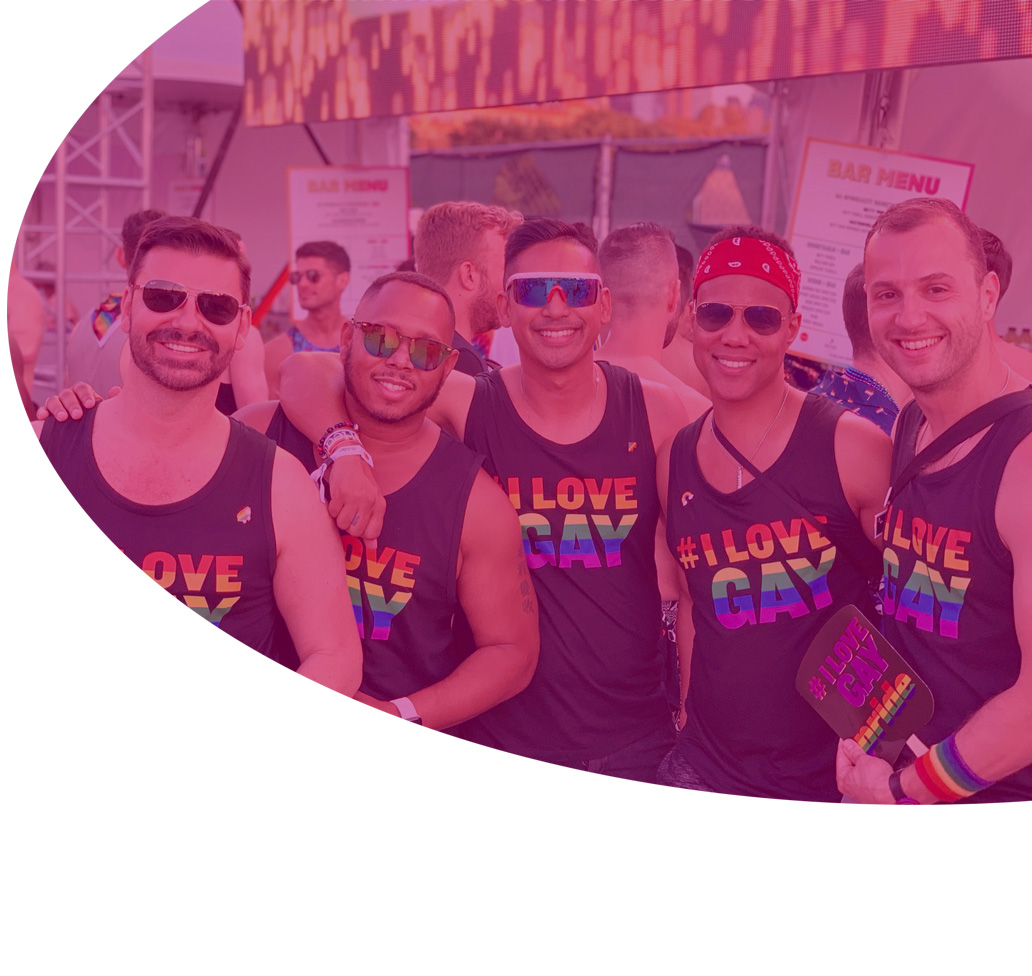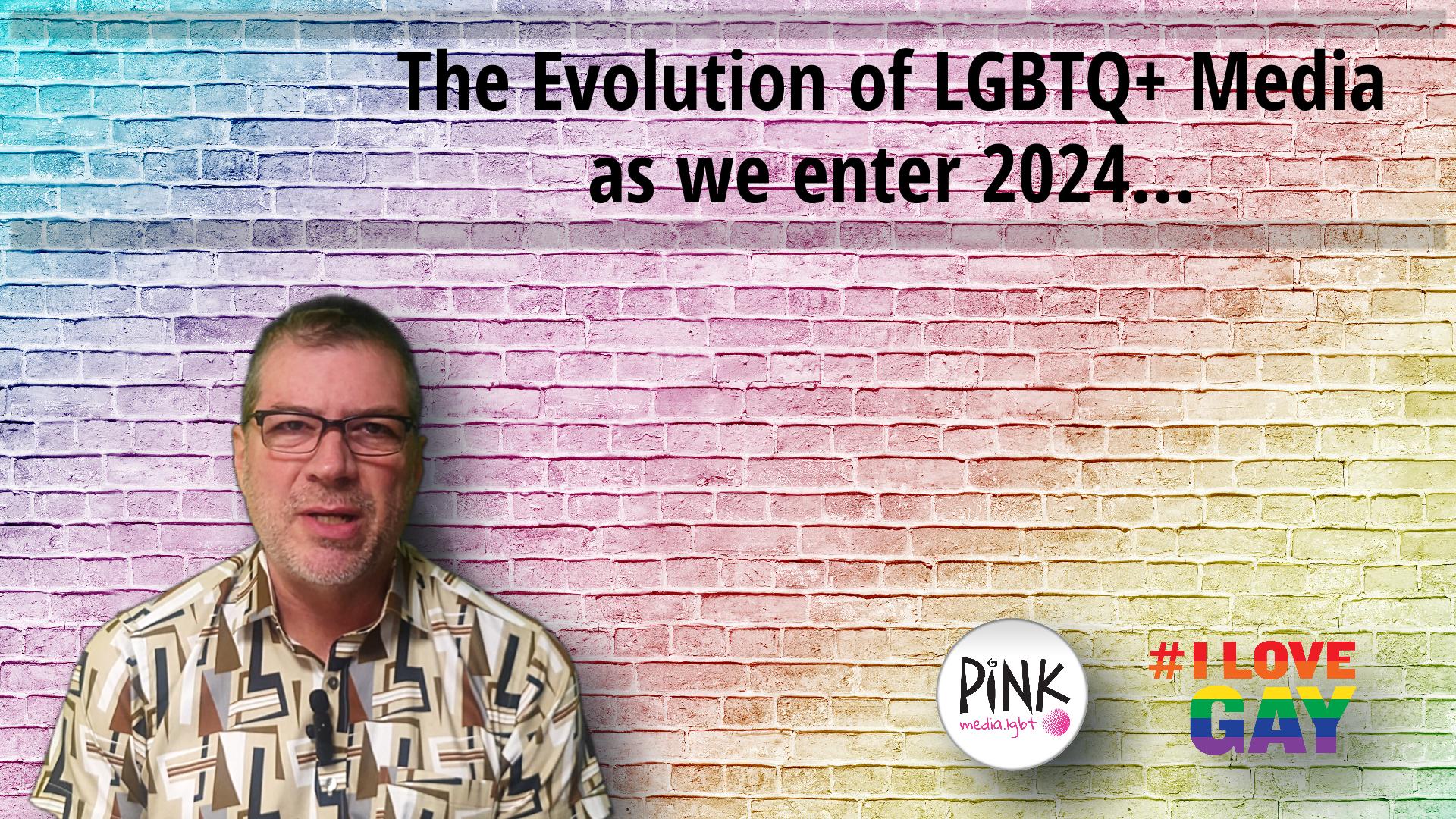The Evolution of LGBTQ+ Media as we enter 2024
HOME | Blog | The Evolution of LGBTQ+ Media as we enter 2024
As we wrap up 2023 and prepare for 2024, with all of its potential for disruption and change on the horizon, I find it's a very good time to talk about the world of media and the changes we've experienced over the past 10 years, and how those changes are relevant to where we're at today. I've been reading more and more media reports on the concept of the "news desert" and "ghost newsrooms". It turns out quite a few local media organizations have been either bought out or closed down over the past decade, with very little in their wake to replace them. For those that have remained, quite a few are operating as what is defined as a "ghost newsroom". As covered in the Wall Street Journal recently in their article "Your Local Newspaper Might Not Have a Single Reporter", the ghost newsroom is a business model and concept whereby what used to be a newsroom with staff covering local stories by journalists, has been reduced to no staff and simply freelancers covering a few stories here and there. With some of this local media having been bought out by larger, national media conglomerates, the websites for these local media have integrated more generic, national news articles that are shared amongst a myriad of other local publications often owned by these conglomerates, alongside their sparser local coverage.
The same has happened in LGBTQ+ media as well... it started out with the closure of Window Media 15 years ago, and has continued on recently amongst publications ranging from Echo Magazine in Phoenix, Camp KC in Kansas City, Out & About Nashville, Columbia FunMaps, Frontiers Magazine in Los Angeles, Next Magazine in New York, and well... the list goes on.
But not everything is doom and gloom in the media world... in this disruptive scenario lies opportunity. That same Wall Street Journal article also points out that in its place, some freelancers have begun to fill this local journalism void. They operate on a small but viable budget and focus their efforts online, with a website and supporting social media as their primary outreach and presence to support and publish the content they create. I would say that this is the first level of a basic, "new media" local newsroom business that can support itself. The next level would be a local individual or organization covering news and stories, but with a stronger emphasis on social media and less on traditional articles on a website. We're seeing this in the rise of TikTok video news, as well as other news in written form, photos or videos, that use one of the myriad of social media platforms popular today, including TikTok, Instagram and Facebook Reels and YouTube, as their primary content distribution platforms.
The 3rd, and most exciting business model we're seeing in local media today incorporates everything we've mentioned thus far, including a website for content, as well as social media posts created to carry these news bites directly to their audiences via Facebook, Threads, Instagram, Twitter/X, TikTok and more. These social media posts will include the subjects they are talking about being tagged in the posts, structured to tap into the true potential of social media. Where this is all taken to the next level is when these social media platforms are leveraged and maximized to their full potential. Rather than just being used as an extension of a local newsroom, these social media profiles are managed in such a way as to be engaged with their audience, in a 2-way relationship speaking WITH their audience, rather than just TO or AT their audience. On the social media level, this new type of local media company is engaged with local content creators, influencers and others posting high-quality, relevant local content that can be curated and shared by the local media company's social media platforms. In addition, if there are high quality articles published by other media that are relevant to this local audience, they can be curated... posted on the website and shared via social media as well. Thus, this new type of local media company becomes a living, breathing hub of local news that is a combination of locally-created content, curated content that is relevant at the local level, and high-quality, user-generated content that helps bring local events and other news to life from a more authentic lense than ever before.
We're seeing this business model take off more and more, from LA to DC, from London to Tokyo... including all points in between. It's becoming a truly global phenomenon. In the LGBTQ+ world, as part of this local ecosystem, we're even finding local government using their social media as their primary marketing outreach, with content from local LGBTQ+ events being created and promoted in DC, Atlanta, Philadelphia and more. In Los Angeles, the local LGBTQ+ Center has served as a mini-media hub, posting and promoting their own content, alongside other local LGBTQ+ news and events happening in the area. They even acquired the domain gay.com a few years back. In the world of health, we're seeing more and more grant money go towards HIV and STD prevention, including PrEP, being spent by local LGBTQ+ centers that have an existing local social media audience they can get the word out to, directly.
In fact, most organizations that would have been traditional advertisers for local LGBTQ+ media are now posting and promoting themselves, going direct to their audiences. Having the ability to also work with a local LGBTQ+ media company that is designed to help amplify their current postings to reach an even wider yet targeted, local LGBTQ+ audience is becoming the win-win strategy as we enter 2024. It's perfectly aligned with how most local organizations, large and small, are getting the word out today.
We talk a lot about local media here, but you can see this same strategy applies to any niche media around the globe. Being able to be an LGBTQ+ media hub for travel, sports, theatre, movies and more allows organizations that are promoting LGBTQ+ travel to their destinations, or LGBTQ+ films to a movie-going audience, to team up to help see their content amplified to an even greater targeted audience.
So what does this look like in practice. Let's take a look at a destination such as Palm Springs. Here you're seeing local restaurant content, local LGBTQ+ health content, local event content... all being posted online, with the ability to be promoted and amplified to an audience that either lives in Palm Springs, or has a desire to travel to Palm Springs. This applies to social media content, and content that is discovered by monitoring for LGBTQ+ Palm Springs content and simultaneously curating and sharing that content to an LGBTQ+ local and traveling audience. Monitoring and sharing high-quality, user-generated content, as well as local LGBTQ+ media content related to an event, in this case, Palm Springs Pride, allows for both the local media company and a destination client to be promoted along with the sharing of this content.
The same applies for the world of LGBTQ+ theatre, as seen in these posts for a recent New York off-Broadway production, or in the world of LGBTQ+ film, as seen in these posts for recent LGBTQ+ films in theatres and film festivals recently, including a summary of a campaign's advertising performance. In the world of health, working with existing artwork and messaging allows for a campaign reaching a targeted audience both regionally and by theme... in this case, individuals who have shown an interest in HIV and STD prevention.
The list goes on.
So from this new style of LGBTQ+ media company, what does this win-win partnership look like? We see two viable directions here. One is for the media company to operate as a hybrid media & marketing company. The media side of their business allows for their clients and partners to tap directly into their well curated, targeted audience via their website and social media platforms, just like traditional online media companies have done in years past. The marketing side of this business model, however, allows for putting advertising dollars towards this same targeted audience, reaching this audience with greater frequency, while also reaching out to others in the same demographic target utilizing some of the advertising technologies available today via social media, mobile app advertising, programmatic banner and video advertising, and more.
The second viable option is for the media company to operate as a content creator as well, developing written content, photos and video for clients that can then be distributed via their media network. This is more aligned with the current influencer/content creator business model, but when applied to a media company rather than an individual, allows for a stronger business lense to be applied to this style of content creation and outreach. This business model also allows for strong collaboration with existing influencers and content creators, bringing advertising revenue to these influencers while allowing some of the best and most current content created today to be leveraged as advertising content.
And perhaps a combination of media, marketing & content creation can be established to create an even more unique organization with the simple mission of helping their clients reach a stronger, wider and yet more targeted audience than ever before!
In the LGBTQ+ world, that is our #ILoveGay business model. A hybrid media & marketing firm with a dose of content creation brought in as needed. We've had a record year in 2023 with bringing elements of this strategy to the marketplace... and we're poised to bring this all together in an even stronger way for our clients in 2024, with our #ILoveGay network now reaching over 1.5 million followers and growing fast. So give us a call or e-mail us today... we'd love to work with you.
Learn more about our Entry Level programs to get started!
Supporting Articles and Links:
Sound Bites:
- startups have sprouted to cover the issues that no longer appear in the local paper's pages, but not to a degree large enough to offset the decline of established news publications
- The hollowing out of local newsrooms comes as waves of consolidation and layoffs have significantly changed the country's news landscape over the past decade. Smaller outlets were hit particularly hard by sharp declines in circulation and incursions into their online advertising businesses from tech giants such as Google and Facebook.
- sharing resources such as editorial staff and content between publications enables its newsrooms to "focus on high-impact local journalism and to share best practices"
- About 2-1/2 newspapers are disappearing in the U.S. every week, according to the Northwestern study, and the country has lost almost two-thirds of its newspaper journalists since 2005. The decline of local news is having an outsize impact on the entire media industry because the study said that until recently, as much as 85% of the news that ultimately made national headlines was first published in a local newspaper.
Are you interested in being a part of these LGBTQ+ conversations? We work with any budgets (starting at $500)... call us at (323) 963-3653 or contact us here to get started.





